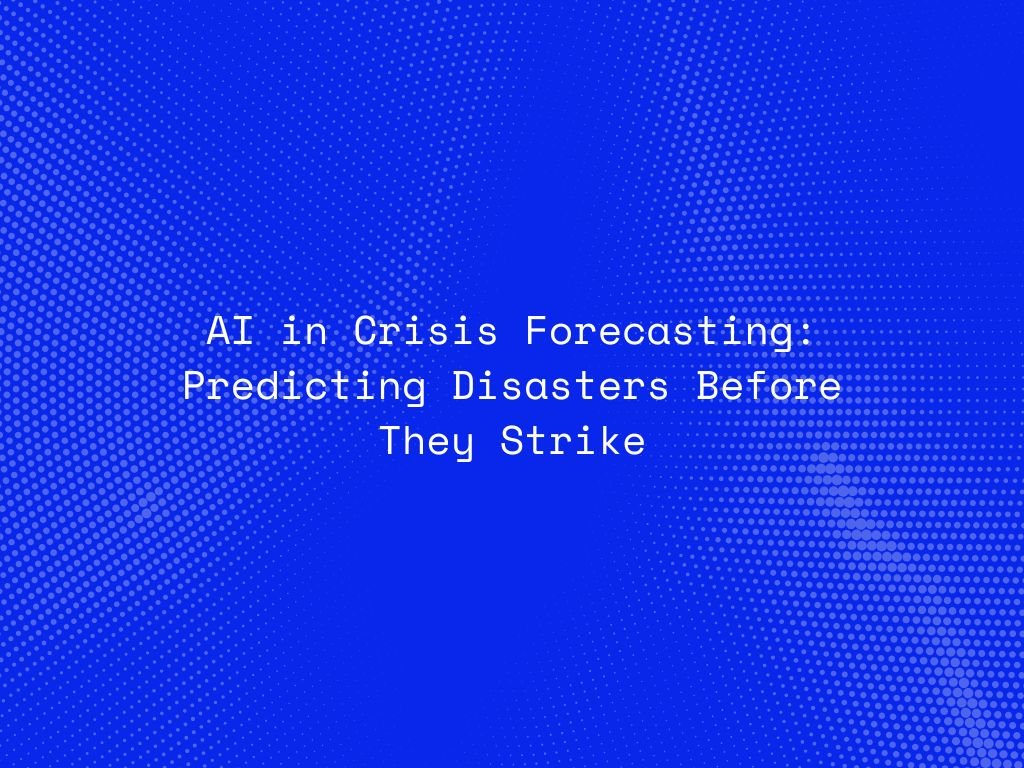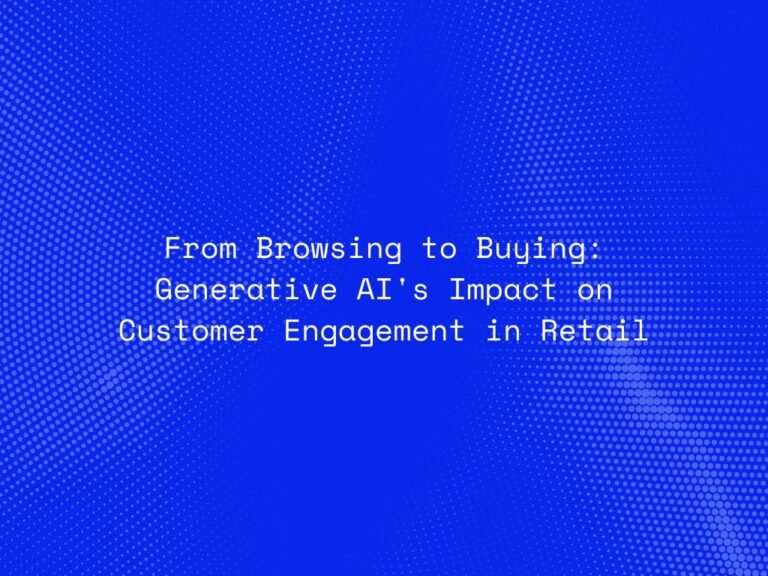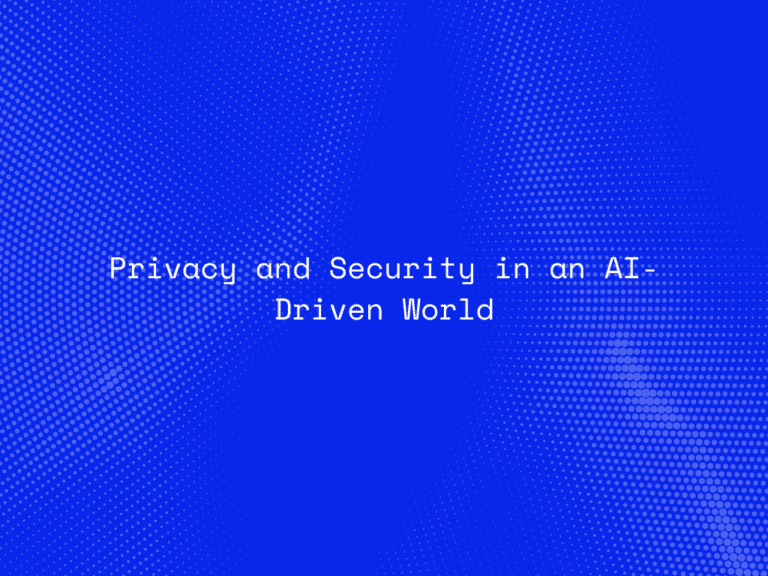In an increasingly unpredictable world marked by natural disasters, pandemics, and geopolitical conflicts, the ability to anticipate crises before they unfold has become a defining factor in how societies, businesses, and governments prepare for the future. Traditional forecasting methods, reliant on historical data and manual analysis, often fall short in recognizing early warning signs hidden in complex data patterns.
This is where Artificial Intelligence (AI) is reshaping the landscape — enabling crisis forecasting systems that can detect anomalies, predict emerging threats, and model disaster scenarios in real time. From climate change impacts to financial instability, AI-driven forecasting is empowering decision-makers to respond proactively rather than reactively, saving lives, resources, and critical infrastructure.
Understanding AI-Powered Crisis Forecasting
Crisis forecasting involves collecting and analyzing vast, diverse data sources to detect potential risks or disasters before they occur. AI enhances this process by using machine learning (ML), deep neural networks, and predictive analytics to identify patterns that humans might overlook.
By continuously learning from new data, AI models can simulate how various factors — such as temperature changes, seismic shifts, disease transmission rates, or market fluctuations — might interact to trigger crises. This adaptive intelligence allows systems to forecast events with greater speed and accuracy, even when data is incomplete or constantly changing.
Key Applications of AI in Crisis Prediction
1. Natural Disaster Forecasting
AI models trained on satellite imagery, atmospheric data, and historical patterns are now capable of predicting natural events like floods, hurricanes, and wildfires with remarkable accuracy. For example, deep learning models analyze cloud formations, wind speeds, and ocean temperatures to anticipate cyclone paths days in advance, allowing faster evacuation and resource allocation.
2. Epidemic and Pandemic Prediction
Machine learning algorithms have played a pivotal role in disease outbreak forecasting. During the COVID-19 pandemic, AI models analyzed infection data, travel records, and population density to forecast the spread of the virus. Today, similar systems monitor health data globally to detect emerging infectious disease clusters and provide early warnings to health authorities.
3. Supply Chain and Economic Crisis Detection
In global markets, AI is being used to monitor supply chain disruptions, commodity prices, and trade flows to forecast potential economic or logistical crises. Predictive models can alert companies to raw material shortages, inflationary risks, or demand shocks, enabling strategic adjustments before significant losses occur.
4. Environmental and Climate Risk Analysis
AI helps model long-term environmental changes by processing decades of climate and geological data. These systems forecast rising sea levels, drought patterns, and biodiversity loss, supporting sustainable urban planning and climate adaptation strategies.
5. Social and Geopolitical Instability Prediction
By analyzing online discourse, news trends, and satellite imagery, AI can detect early signals of civil unrest, migration patterns, or regional conflicts. Governments and NGOs can use this data to mediate conflicts, deploy aid, or prepare for mass displacement more efficiently.
How AI Enhances Crisis Preparedness
AI transforms crisis management from a reactive process into a predictive and preventive strategy. Key advantages include:
-
Real-Time Data Processing: AI can analyze millions of data points from satellites, IoT sensors, and social media feeds simultaneously.
-
Anomaly Detection: Machine learning models identify subtle deviations in data — such as shifts in weather patterns or abnormal human behavior — that may indicate an emerging threat.
-
Scenario Simulation: Advanced AI systems can simulate “what-if” crisis scenarios to test response strategies and assess vulnerabilities.
-
Faster Decision-Making: By reducing the lag between detection and response, AI enables emergency teams and organizations to act swiftly and strategically.
Case Studies: AI in Action
-
Google’s Flood Forecasting Initiative:
Using machine learning and satellite data, Google developed AI-powered flood forecasting tools that provide early alerts to communities in India and Bangladesh, helping authorities mitigate damage and loss of life. -
UN Global Pulse:
The United Nations leverages AI to analyze social media, mobile data, and economic indicators, providing insights for humanitarian crisis prediction and response planning. -
NASA’s Earth Science Division:
AI models at NASA analyze satellite data to predict wildfire risks and environmental degradation, enabling better resource deployment for disaster prevention.
Challenges in AI-Based Crisis Forecasting
While AI brings transformative capabilities, several challenges persist:
-
Data Quality and Accessibility: Incomplete or biased datasets can limit the accuracy of predictions.
-
Interpretability: Complex AI models often operate as “black boxes,” making it difficult to explain or trust their forecasts in high-stakes scenarios.
-
Ethical and Privacy Concerns: Collecting sensitive data for crisis monitoring can raise privacy and ethical issues.
-
Infrastructure Limitations: Many regions lack the digital infrastructure to implement or benefit from AI-based forecasting systems effectively.
Addressing these issues requires a balance of technological innovation, transparency, and governance frameworks to ensure AI serves the public good without compromising ethical standards.
The Road Ahead: Toward Proactive Resilience
As the world faces increasing uncertainty due to climate change, population growth, and global interdependence, AI-driven crisis forecasting will become an essential component of resilience planning. By integrating AI with IoT sensors, blockchain for data integrity, and cloud-based analytics, organizations can build predictive ecosystems capable of anticipating and mitigating crises before they strike.
The future of crisis management lies in a proactive intelligence model — one that not only warns us of impending danger but also guides strategic preparation and rapid recovery. In this new era, AI is not just a technological advantage; it’s a safeguard for humanity’s collective resilience.




